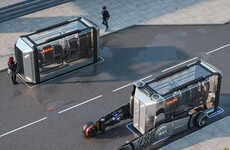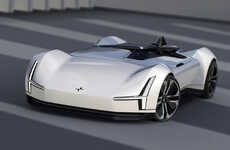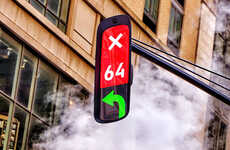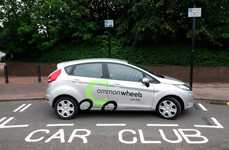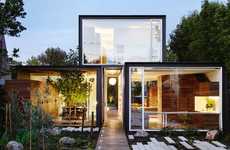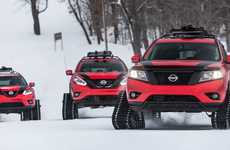
The Superloop Road Intersection Design Accommodates Self-Driving Cars
Michael Hemsworth — February 3, 2016 — Art & Design
References: timeafter.lv & tuvie
The rise of the autonomous car is slow and steady, but as cities prepare for the onslaught of self-driving cars the Superloop road intersection design could have them covered.
Designed by Atis Sedlenieks, the Superloop works by accommodating all the needs of a modern metropolis. Created for the the Tallinn Architecture Biennale 'Self-Driven City' project, the Superloop sees a more efficient way to build intersections in the future.
Being that autonomous cars would do away with human error, higher speeds would be able to be achieved, which would likely only be inhibited by road intersections. The Superloop looks to make intersections slightly subterranean to make the most of every inch in urban areas where space is limited.
Designed by Atis Sedlenieks, the Superloop works by accommodating all the needs of a modern metropolis. Created for the the Tallinn Architecture Biennale 'Self-Driven City' project, the Superloop sees a more efficient way to build intersections in the future.
Being that autonomous cars would do away with human error, higher speeds would be able to be achieved, which would likely only be inhibited by road intersections. The Superloop looks to make intersections slightly subterranean to make the most of every inch in urban areas where space is limited.
Trend Themes
1. Autonomous Cars - The rise of autonomous cars presents opportunities for disruptive innovation in transportation and mobility.
2. Efficient Intersections - Designing more efficient intersections can optimize traffic flow and accommodate autonomous vehicles.
3. Subterranean Infrastructure - Creating subterranean road infrastructure can maximize urban space utilization and improve city planning.
Industry Implications
1. Transportation - The transportation industry can explore new technologies and services to support the growing adoption of autonomous cars.
2. Urban Planning - Urban planners can leverage efficient intersection designs to improve traffic management and city infrastructure.
3. Construction - The construction industry can play a key role in implementing subterranean road infrastructure and developing innovative construction techniques.
4.4
Score
Popularity
Activity
Freshness














